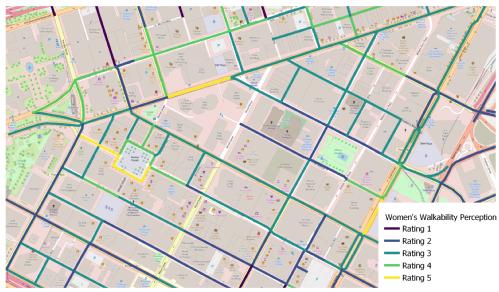Walkability Perception and its Relations to Scenery Elements and Socio-Demographics
Walkability Perception and its Relations to Scenery Elements and Socio-Demographics

Walking has numerous benefits for the mental and physical health. It is a sustainable mode of mobility that modern cities should incentivise. Walkability, a notion of how friendly a street is for walking, entails different aspects like the perception of safety, beauty and social vibrancy. The perception of walkability is also influenced by the physical structure and spatial configuration of streets and their features.
Most studies on walkability are conducted based on interviews collecting valuable and detailed data. However, this data collection procedure is time- and resource-intensive and difficult to upscale to large areas. This project will leverage on street view imagery, deep learning image interpretation, crowdsourcing technologies, and geospatial datasets to develop a data-driven account of how the perception of walkability relates to physical, social and visual attributes of streets across different social groups, thus providing city administrators and planners a concrete and transferable methodology that helps them evaluate and enhance the liveability of their cities. Besides a transferable methodology to estimate city-wide walkability, we will propose data visualisations that surface the diversified perception of the urban space across different groups and that may support data-based theoretical developments on this multi-dimensional concept.
